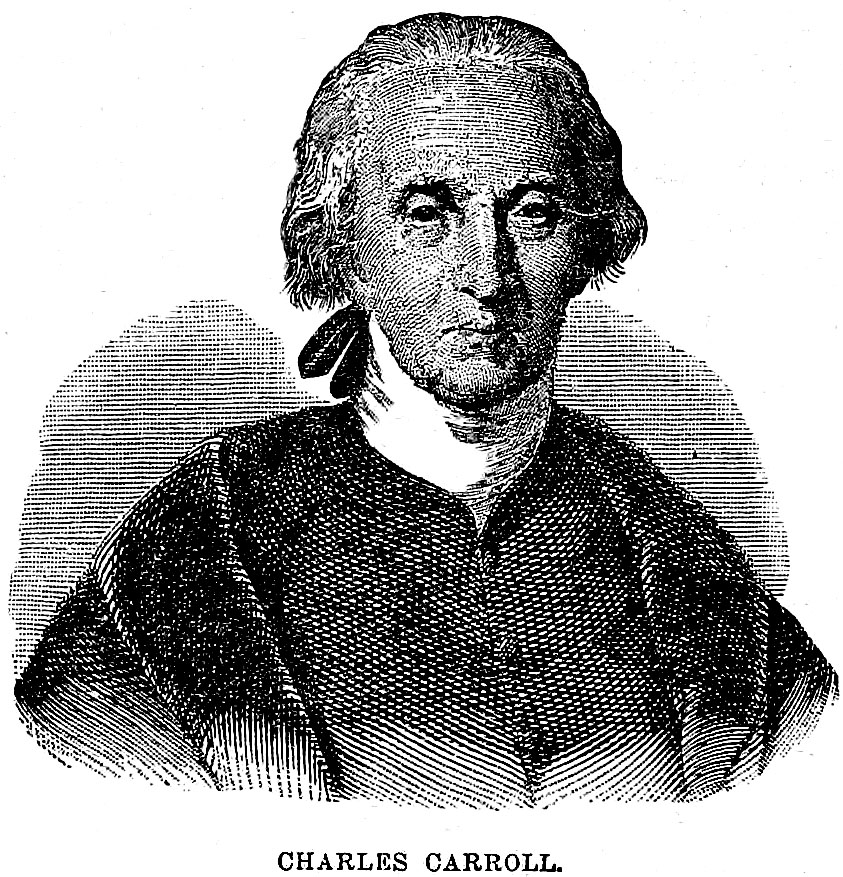Carroll, Charles, of Carrollton, signer of the Declaration of Independence; born in Annapolis, Md., Sept. 20, 1737. His family were wealthy Roman Catholics, the first appearing in America at the close of the seventeenth century. He was educated at St. Omer's and at a Jesuit college at Rheims; and studied law in France and at the Temple, London. He returned to America in 1764, when he found the colonies agitated by momentous political questions, into which he soon entered — a writer on the side of the liberties of the people. He inherited a vast estate, and was considered one of the richest men in the colonies. Mr. Carroll was a member of one of the first vigilance committees established at Annapolis, and a member of the Provincial Convention. Early in 1776 he was one of a committee appointed by Congress to visit Canada to persuade the Canadians to join the other colonies in resistance to the measures of Parliament. His colleagues were Dr. Franklin and Samuel Chase. The committee was accompanied by Rev. John Carroll. The mission was fruitless; and when, in June, the committee returned to Philadelphia, it found the subject of independence under consideration in Congress. Carroll and Chase induced Maryland to change its attitude. Carroll was the last survivor of that band of fifty-six patriots who signed the Declaration of Independence.
Mr. Carroll served his State in its Assembly, in the national Congress, and in other responsible offices, with fidelity and ability. At the age of over ninety years (July 4, 1828) he laid the corner-stone of the Baltimore and Ohio Railway, attended by an imposing civic procession. The story that he appended “of Carrollton” to his name defiantly, to enable the British crown to identify him, is a fiction. He was accustomed to sign it so to prevent confusion, as there was another Charles Carroll. He died in Baltimore, Md., Nov. 14, 1832.
